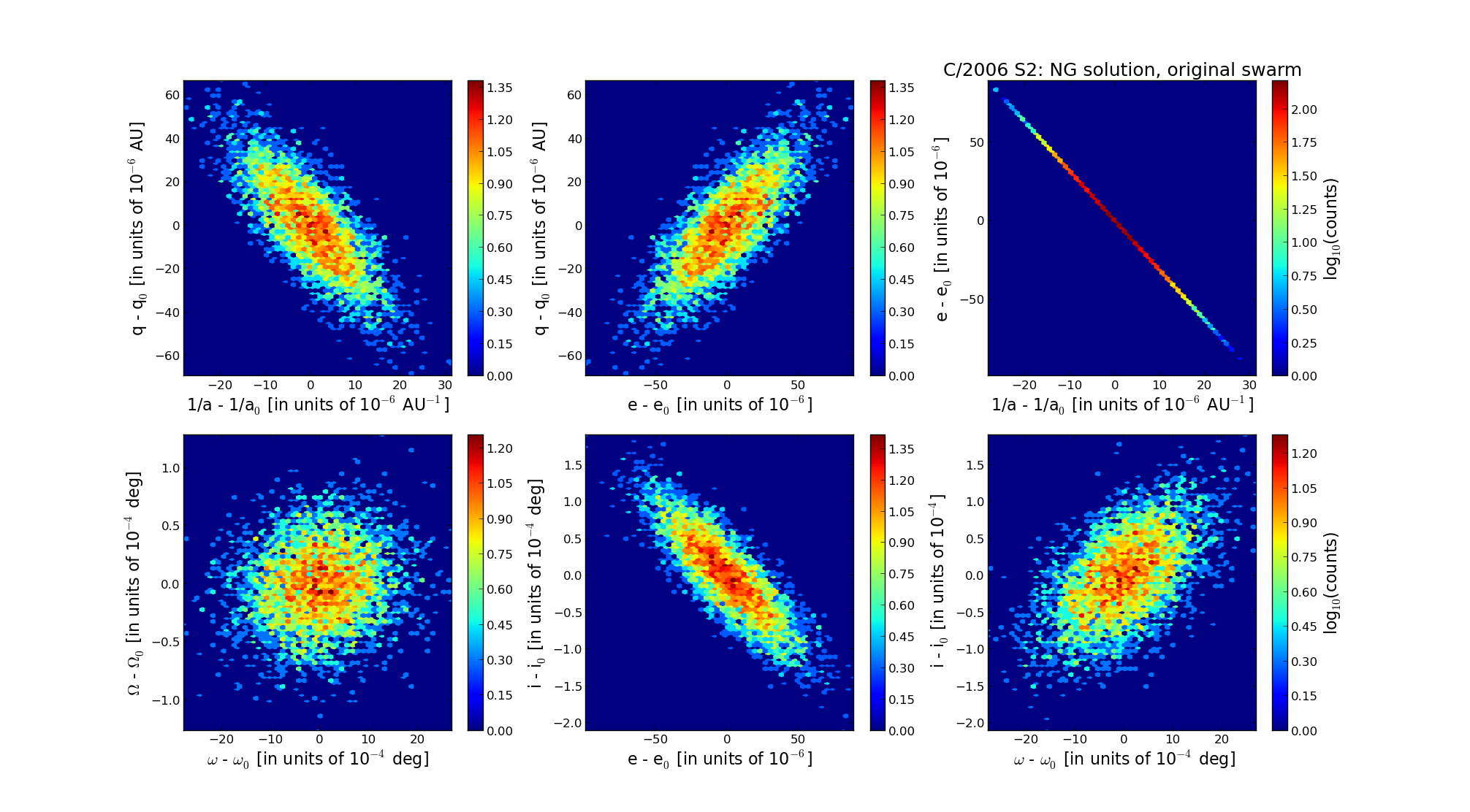| Solar System Dynamics & Planetology Group |
 |
C/2006 S2 LINEAR |  |
| Solar System Dynamics & Planetology Group |
 |
C/2006 S2 LINEAR |  |
| number of observations | 178 |
| number of residuals | 346 |
| data interval | 2006 Sep. 17 — 2007 July 16 |
| rms [arcsec] | 0.44 |
| orbit quality class | 1b |
| Epoch (TT) | 20070520.0 | = JD 2454240.5 |
| time of perihelion passage (TT) | 20070507.356456 | ± 0.006086 |
| perihelion distance | 3.16144197 | ± 0.00000729 |
| eccentricity | 1.00206698 | ± 0.00001973 |
| argument of perihelion [deg] | 166.342741 | ± 0.001530 |
| longitude of the ascending node [deg] | 113.885818 | ± 0.000032 |
| inclination [deg] | 98.962277 | ± 0.000053 |
| inverse semimajor axis [10-6 au-1] | -653.81 | ± 6.24 |
| Nongravitational parameters [10-8 au/day2] | A1 = 772 ± 299 | A2 = -167 ± 199 | A3 = 0.0 (assumed) |

| Epoch (TT) | 17040727 | |
| time of perihelion passage (TT) | 20070508.028917 | ± 0.003363 |
| perihelion distance | 3.15839357 | ± 0.00001988 |
| eccentricity | 0.99977096 | ± 0.00002572 |
| argument of perihelion [deg] | 166.480582 | ± 0.000797 |
| longitude of the ascending node [deg] | 113.906396 | ± 0.000032 |
| inclination [deg] | 99.006662 | ± 0.000054 |
| inverse semimajor axis [10-6 au-1] | 72.52 | ± 8.14 |
| Epoch (TT) | 23090318 | |
| time of perihelion passage (TT) | 20070507.460166 | ± 0.009306 |
| perihelion distance | 3.15535756 | ± 0.00001606 |
| eccentricity | 1.00003397 | ± 0.00005708 |
| argument of perihelion [deg] | 166.235774 | ± 0.002563 |
| longitude of the ascending node [deg] | 113.952733 | ± 0.000032 |
| inclination [deg] | 98.991350 | ± 0.000056 |
| inverse semimajor axis [10-6 au-1] | -10.77 | ± 18.09 |